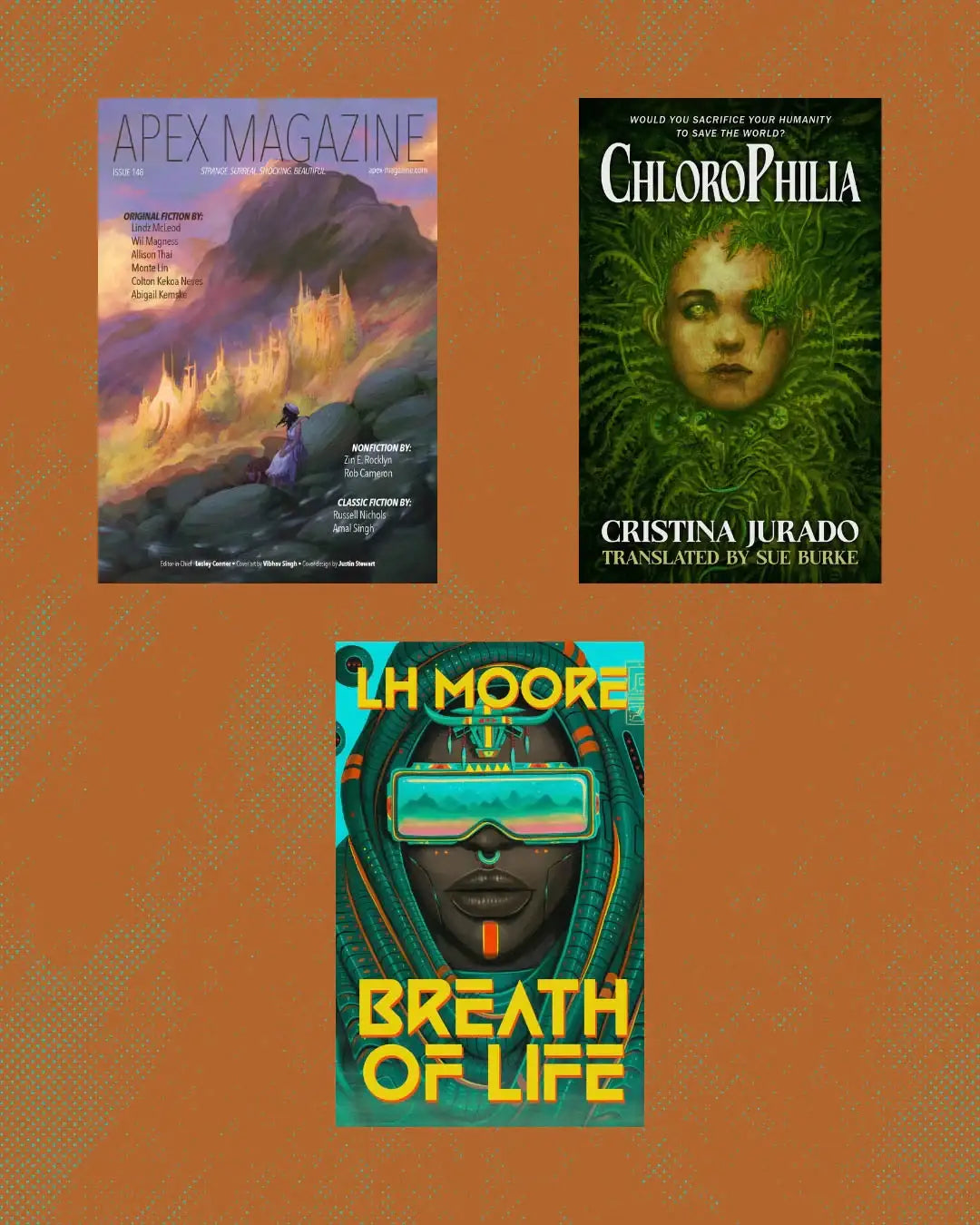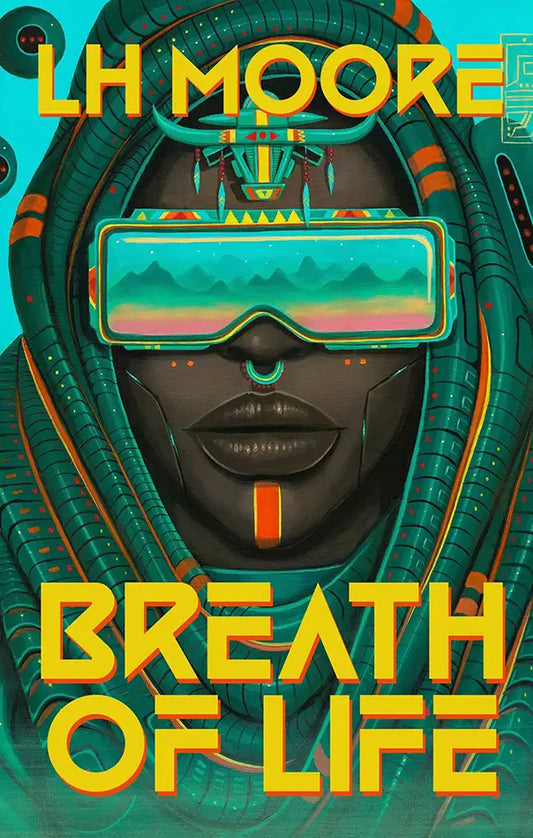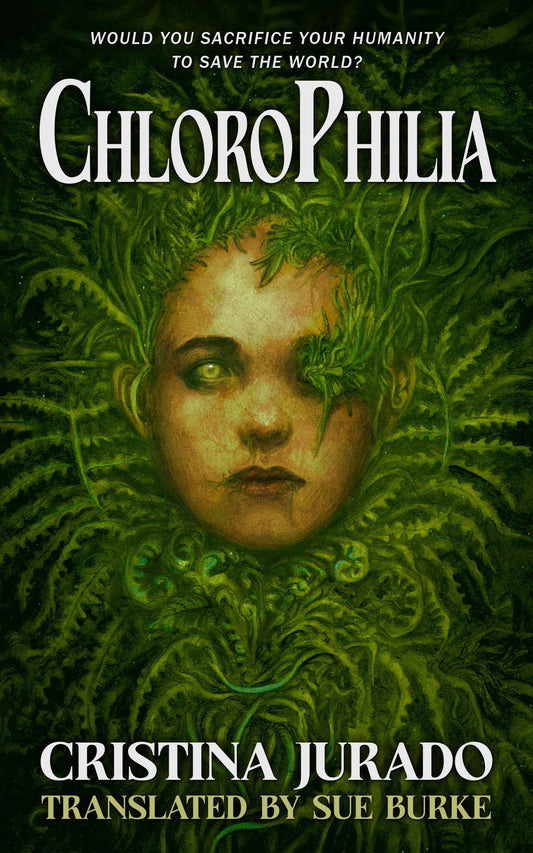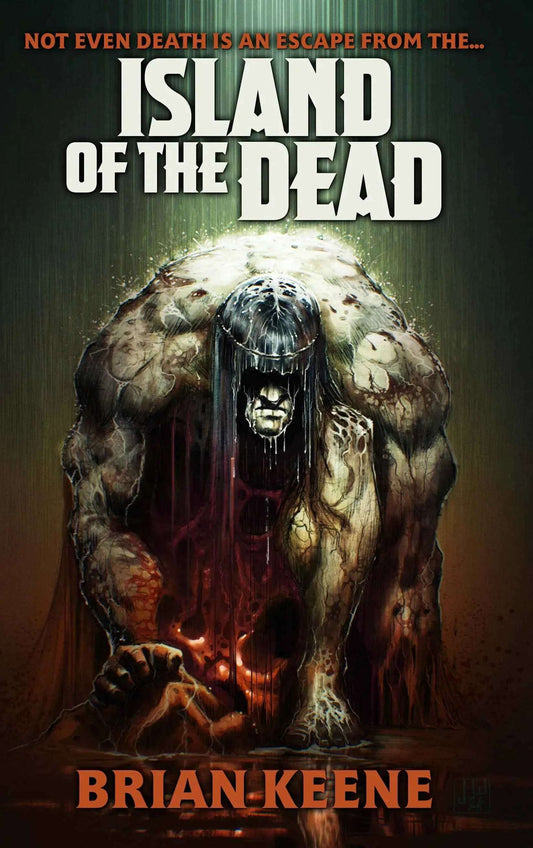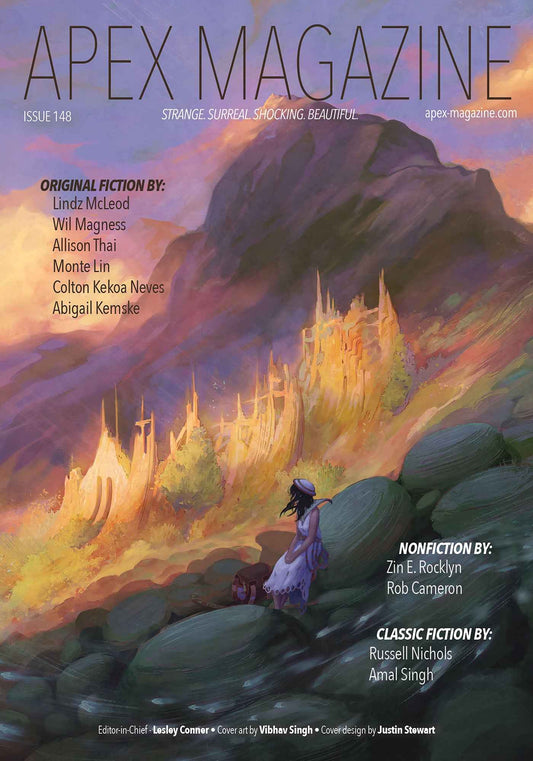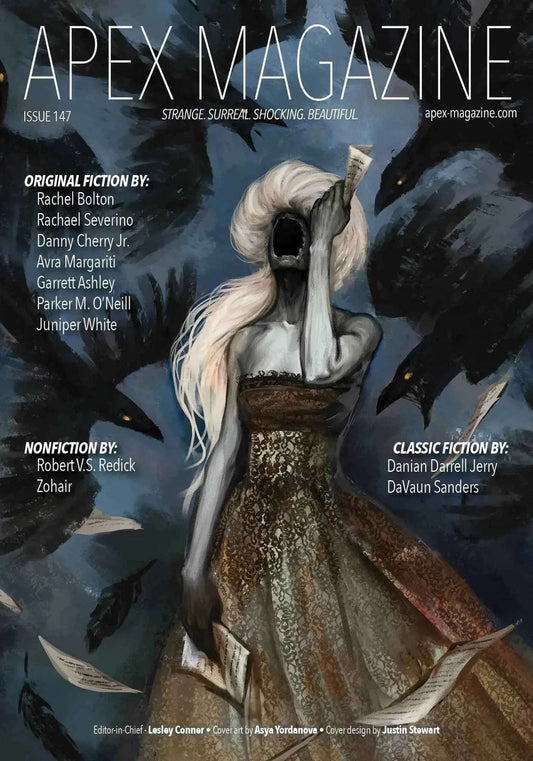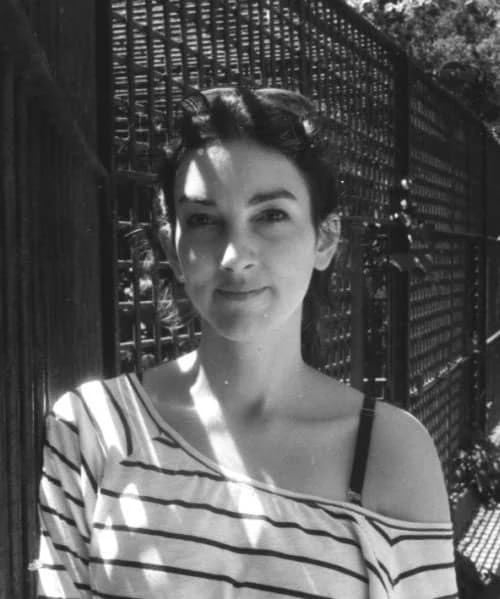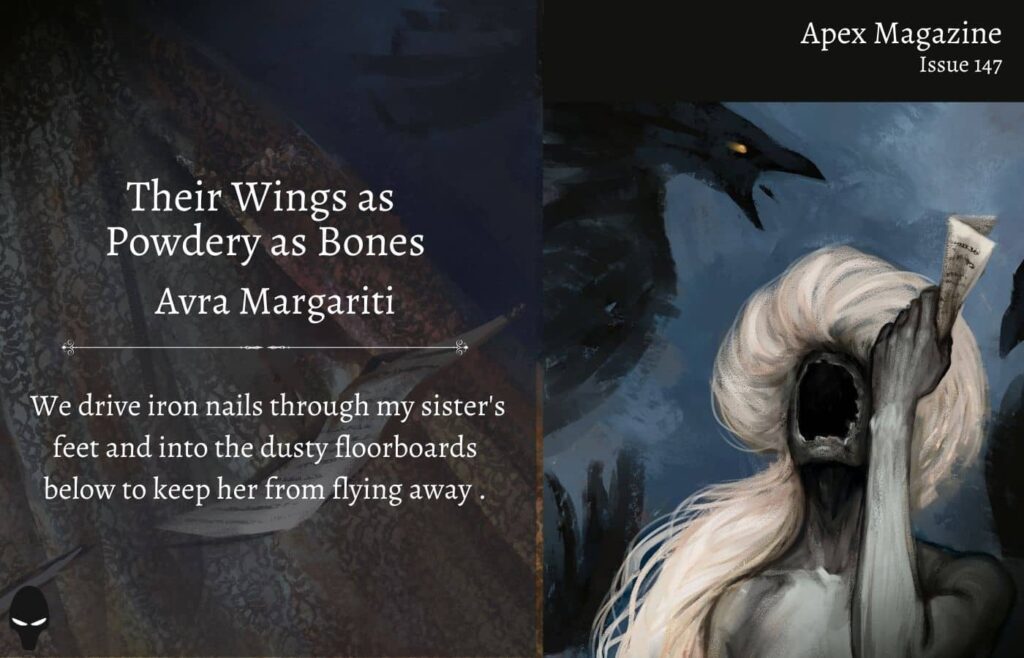
In “Their Wings as Powdery as Bones,” giant moth-like angels have appeared over a town, partially destroying it and spreading their wings across the sky. Ever since then, chosen children rise ecstatically up into the air, called up by the angels. Some adults have taken extreme measures to ensure they don’t lose their children to the strange phenomenon. One mother, who has always insisted her children must never leave her, has shackled one daughter to the floor to prevent her from pursuing her calling and greatest desire: to join the angels. Her twin sister, the narrator of the story, is not only a witness but also complicit in her sister’s imprisonment and suffering. She has a choice: she can keep helping their mother imprison her younger sister, denying the girl’s wishes; or she can help her sister escape and live the life she chooses. However, the latter would mean becoming the left-behind sister, an object of pity and disgust. Worse, it would mean confronting her own lack of independence and fearless individuality.
Avra Margariti is a queer author, Greek sea monster, and Rhysling-nominated poet with a fondness for the dark and the darling. Avra’s work haunts publications such as Strange Horizons, The Deadlands, F&SF, Podcastle, Asimov’s, Vastarien, and Reckoning. You can find Avra on twitter (@avramargariti).
Marissa van Uden: Thank you so much for joining us, Avra! “Their Wings as Powdery as Bones” is not only layered with complex flawed characters, but the setting is also eerily, cosmically beautiful. Can you tell us a bit about how the original idea formed and then how it was shaped from there. What inspired you to write this story?
Avra Margariti: Thanks so much for having me! This story came to me in two fragmented images: one, a girl standing upright, with nails driven through her feet—defiant, despite her circumstances. The other image was an overlapping latticework of wings settling like a dome over a small town. How the light would change as it filtered through the obstruction, how the town’s infrastructure—as well as its people’s spirit—would be destroyed or repurposed. From there, I just needed to connect the two images into a single story, figure out how they interact.
MVU: The story reveals how abusers can harm those closest to them while justifying their cruelty as “for your own good.” I was fascinated to see this explored through the eyes of a young woman who is at a moment where she can choose to reject the abuse her mother is normalizing or become like her mother. She seems on the cusp of recognizing how her own personal resentments are fueling her willingness to take away her sister’s agency, yet again and again she chooses to cosign her mother’s acts rather than see her sister happy and free. Can you share a bit about why you decided to tell the story from this perspective and at this moment in her life?
AM: I feel like the most obvious perspective would have been that of the Chosen Sister—the girl who is divinely appointed as the angels’ companion and protector, being protected by them in return. The one who cannot wait to escape her bonds, no matter the sacrifice, and assume the role she’s willingly and blissfully chosen. The next most obvious perspective would have been the mother’s: the abuser’s POV, the one whose abuse is, to her mind, justified by maintaining the status quo and keeping her child from the unsavory, and brightly dangerous, ‘great unknown.’ I went with the perspective that falls somewhere in-between the other two: the remaining sister; the Unchosen One. She has the same face, same body, same upbringing and life experiences as her twin sister, and yet she is the one who isn’t chosen by the angels to head to a different, perhaps better, life. She feels doomed to stay behind with the mother she despises in a nowhere-town, only this time without the one who should have been there by her side, her twin. I thought it would be interesting to explore this character, her guilt and anger, her complicity in atrocity and fear of abandonment.
MVU: I think you were right—it was such an interesting perspective.There is a scene where the younger sister is shackled, dirty, and in a physically pitiful state, yet she turns the pity back on the narrator, who is refusing to help her fly free.
My sister laughs like grating planetary rings. “You groundling,” she says with a pity so immense, It contorts my insides.
It sounds like: you will never understand.
It sounds like: you will forever be left behind.
I loved this passage because it reminded me of how much survival is a mental game, and because it flips the mirror on the narrator, showing her that it’s her sister who is truly free, despite the shackles. Could you talk a little about this, and about what this scene means to you? Do you think it’s this force, the power of the free mind, that the narrow-minded fear the most, and why they cling so hard to coercion and control?
AM: I’ve always been drawn to the idea that pain—especially ritualized pain, which in this case the shackling of the Chosen Sister becomes for this family—can act as an agent of spiritual freedom. The angels of my story aren’t necessarily religious beings—they are more like aliens than celestial creatures—but they are still Other, still esoterically powerful. Indirectly, the Chosen Sister goes on an ascetic, flagellant journey to prove her devotion to the creatures that chose her to ascend. In that way, her family cannot conceive that, by punishing and anchoring her to the ground, they are really aiding her ascension.
MVU: The ending of this story is beautifully nuanced, giving us a moment of empathy for the narrator as she looks out at the endless sky from her own prison of fear, indoctrination, and self-denial. The iron nails of the mind. Did you have this final image in mind when you started writing, or did you follow the narrator here as her story evolved?
AM: When I begin writing a story, I always know what the ending will be—this is because I tend to write in a circular manner, even when I don’t know the middle, which usually reveals itself as I write. The moment I wrote my opening line (“We drive iron nails through my sister’s feet and into the dusty floorboards below to keep her from flying away.”), I automatically knew that the final scene, and final line, was going to be a reversal of my opening. (“As I look up at the endless sky, I am leaden and heavy. Rooted to the ground as if by iron nails driven through my feet.”)
MVU: I’d love to know a bit about your journey to becoming a storyteller. At what age did you know you wanted to be a writer, and what made you fall in love with it? Was there a particular author, artwork, or family member in your life who was an early inspiration, and do you remember what your first stories were about?
AM: Ahem. It was trashy gay fanfiction written in elementary school.
MVU: Love it! A perfect answer. Do you ever experience times where your creativity just isn’t flowing, and if so, what do you do to refill the well and get yourself back to writing and creating?
AM: This might seem a bit obvious, but I always read when I need to write. I feel like my creativity is pretty self-sustainable up to a point, but whenever the well starts drying a bit, spending a day or two exclusively reading a variety of stories (and not feeling shame around picking up many different things until something clicks and not forcing myself to finish everything) can help fill the well back up pretty quickly.
MVU: Your writing voice is so distinctive—it’s full of poetry, rhythm, emotion, and always the most exquisite and surprising details. I know you’re an autodidact, and I wondered what role this played in refining your voice, if any. Did you take a very conscious and intentional approach to developing your style, and what did that look like? Or did your style evolve through a more organic and subconscious process? What would you say your biggest style influences have been over the years?
AM: You are correct that I’m an autodidact! When I was first beginning to take shortform writing seriously, I read a lot parallel to practicing my own writing. The pieces I read were both poetry and prose, as well as literary stories alongside genre. This caused me to find out I equally enjoy matter-of-fact, pared-down, scalpel-sharp writing, and the more ‘purple’ flowery prose many people tend to dislike. After that, it was a matter of learning how to effectively combine my two influences together for the most emotional impact without sacrificing aesthetical fulfillment.
MVU: That makes so much sense, and the way you blend these two is really hypnotic. Two of my favorite stories of yours are “Cicadas, and their Skins” in Strange Horizons and “Unbirthday Means You Wish Yourself Unborn” in the Seize the Press. In these, like in other works of yours, you seamlessly blend the sublimely beautiful with the grotesque, and a dreamlike romance with visceral horror. What is it that draws you to this space where beauty and horror become one? What do you love to find when you’re creating there?
AM: I like pairs of seemingly opposite things—although, are they really opposite? There is beauty in the grotesque, and terror in the sublime. Think how natural decomposition can look like the colors and shapes of a sunset. Or how altered states of ecstasy contain a kernel of the fear of no return. There is transcendence to be found in combining the two, which often bleeds into my work—especially when it contains body horror or a focus on transformation, the making and unmaking and remaking of things.
MVU: Beautifully said! Speaking of sublimely beautiful fiction, your story “We Are Not Yet Healed” appears an anthology I edited, The Off-Season: An Anthology of Coastal New Weird (which should be out from Dark Matter Ink by the time this issue is released!). This tale, about an eerie blob-girl from the deep, is absolutely hypnotic, like a feral song filled with seafoam, starshine, and longing. Can you share what part of this story was the most fun for you to write? I got the sense there was a genuine delight running all through it. I’d also love to know, did you draw from any specific sources for inspiration while writing it (music soundtracks, artworks, or oceanic documentaries)?
AM: Honestly, giving me permission to go weird does something to my brain. I knew I wanted to go pseudo-Victorian with that story—the trope of the ‘hysterical, convalescing maiden’ was too tempting to resist, especially since dealing with chronic illness is something that has been on my mind a lot lately. I also knew I wanted to write something beautiful, but in a surreal, even elegantly absurdist, way (for example: the scene where the girls try to swallow the ocean whole). A bit like looking at pictures of blobfish, if you think about it (please go look at a gloriously weird blobfish right now). My favorite part to write was when the sea is lifted from its bed and deposited inside the sanatorium, drowning everyone left inside. An early influence for my love of stories about groups of half-feral girls was Karen Russell’s “St. Lucy’s Home for Girls Raised by Wolves”. More recently, I really enjoyed “Sour Milk Girls” by Erin Roberts.
MVU: What are some of the books you’ve most recommended or gifted to others (over your life or recently), and what is it about them that makes you want to share them?
AM: The liminal, tender, melancholy tale of Piranesi by Susanna Clarke.
MVU: Oh, me too—I think of Piranesi all the time. Thank you do much for taking the time to sit with us and share more about your creative life! Before we go, do you have any exciting projects in the works, or any upcoming publications that readers should look out for?
AM: Thank you so much for this interview and all the thought-provoking, beautifully phrased questions! I would like to take this opportunity to shout out the Weird Horror issue of Flash Fiction Online that Eugenia Triantafyllou and I have co-edited, with a Halloween 2024 release. It includes strange, surreal stories by Spencer Nitkey, L.M. Guay, Wailana Kalama, Erin MacNair, Andrew K Hoe, Meg Elison, Damián Neri, and Christine Lucas.
MVU: My pleasure! I have one last bonus question: What a charity that’s really meaningful to you, and that you’d love for readers to check out and support if they’re able to?
AV: This disabled-organized drive to get eSIMs to Gaza: https://disabilityvisibilityproject.com/2023/12/25/crips-for-esims-for-gaza/
